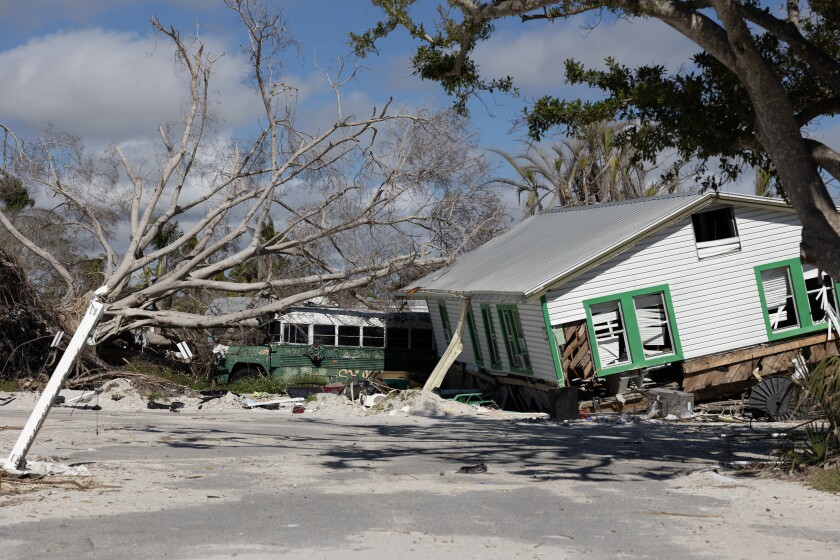As of early September, the nation had logged 23 disasters that each caused more than $1 billion in damage, surpassing the 2022 total of 18 such disasters and far outpacing the previous average of just eight per year.
While the growing number and severity of climate disasters endanger everyone, the threat to lives is particularly acute for the fastest-growing group of Americans: older adults. In Hurricane Katrina (2005), for example, people over 60 accounted for two-thirds of the 1,300-plus fatalities. In California’s Camp Fire (2018), 85 percent of those who died were people over 60; in the winter storms in Buffalo, N.Y. (2022), it was 63 percent. The trend line remains virtually unchanged across disasters over the last nearly 20 years, reflecting our nation’s failure to sufficiently prepare for this new climate reality.
Leaders can no longer effectively plan for climate resilience without considering the aging of the population. A hundred years ago, people over 65 represented one of every 20 people in the U.S.; today they account for one in six. In about 10 years, there will be more people over 65 than under 18 in the U.S.
These intersecting trend lines underscore the need for a new vision of resilience in the face of climate change and for action by local, regional and state leaders to plan for that future.
To protect the safety and well-being of older adults in climate-fueled disasters, leaders must begin by acknowledging the realities and the needs of our over-60 population. While many are able-bodied, financially secure and independent, others are not. Many older adults live with health conditions that present mobility challenges both inside and beyond the home. The vast majority, 96 percent, reside in their homes, not in congregate settings. And older adults typically outlive their ability to drive by seven to 10 years, becoming dependent on friends, family or public transit, which is problematic in times of emergency.
Others lack the income to stockpile supplies or weatherize their homes, much less repair damage after a disaster — particularly the 15 percent of older adults who live at or below the poverty line. In addition, one in nine people over 65 experiences dementia, Alzheimer’s or other forms of cognitive decline, which can impact their ability to assess and mitigate risk. And many do not use the Internet in the home or smartphones routinely, limiting access to information, online registration systems and social media that serves as a real-time community discussion forum.
We can build a more resilient future if leaders anticipate — and account for — the challenges facing older adults. That means creating more dense, resilient, affordable and accessible housing through incentives like zoning change, better building codes and public funding. This would help address the housing needs of older adults, while fostering the social connectedness that helps protect people and ultimately save lives.
A resilient future for all also requires more alternatives to driving, in the form of accessible public transit with sheltered bus stops, as well as walkable and bikeable routes. This would help meet the daily mobility needs of older adults and provide redundancy in times of emergency.
And it is critical that local leaders design and implement communication systems and an array of community-based supports, such as home health aides trained to anticipate the climate-related needs of their patients, to ensure that timely information and help reach older adults.
Local, regional and state leaders understand that complex problems require partnership among many disciplines and across public and private sectors. Achieving climate resilience for an aging nation is no different, presenting critical roles for utilities, health-care providers, advocates for the aging and emergency managers.
Some communities are leading the way by centering the needs of older adults in their planning efforts. During the COVID-19 pandemic, for example, Washington, D.C., officials realized that they needed multiple modes of communication to reach older adults, so they piloted the AlertDC program, which provides emergency updates to residents through email, phone and text. In Austin, Texas, service agencies increased coordination to help older adults access emergency help. San Francisco boosted the preparedness of older residents and people with disabilities by planning for the evacuation of people with mobility challenges from multistory buildings.
What does tomorrow bring? More of the same, likely: More intense weather events. More disasters in which older adults die at twice or three times the rates of other age groups. That is, unless communities and the leaders who serve them commit to a vision of climate resilience that truly accounts for the needs of older adults and centers their needs and voices in planning efforts.
Danielle Arigoni, a policy and program expert in the fields of livable communities, affordable housing and climate resilience, is the managing director of policy and solutions at the National Housing Trust. Her latest book is Climate Resilience for an Aging Nation.
Governing’s opinion columns reflect the views of their authors and not necessarily those of Governing’s editors or management.
Related Articles













